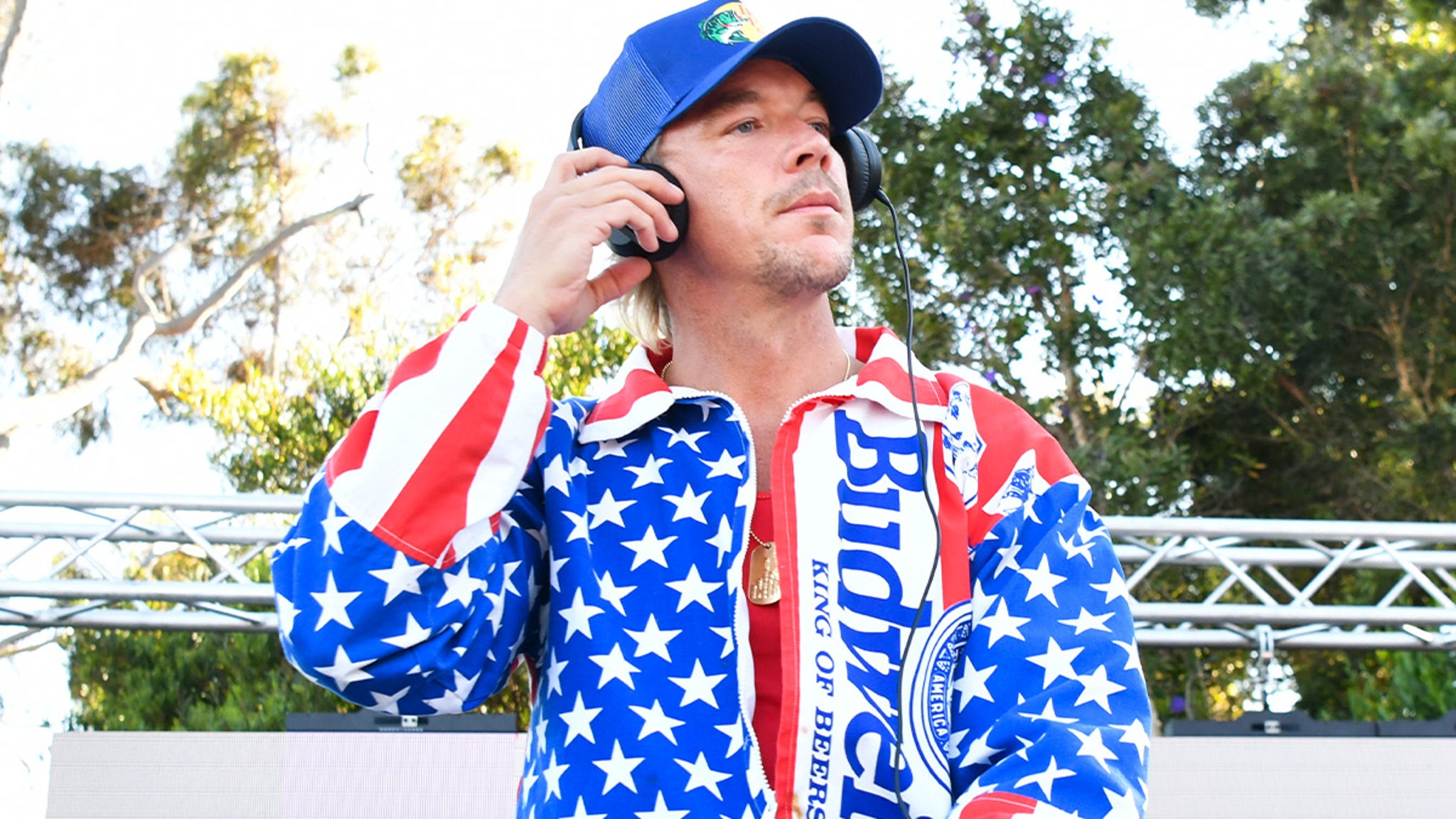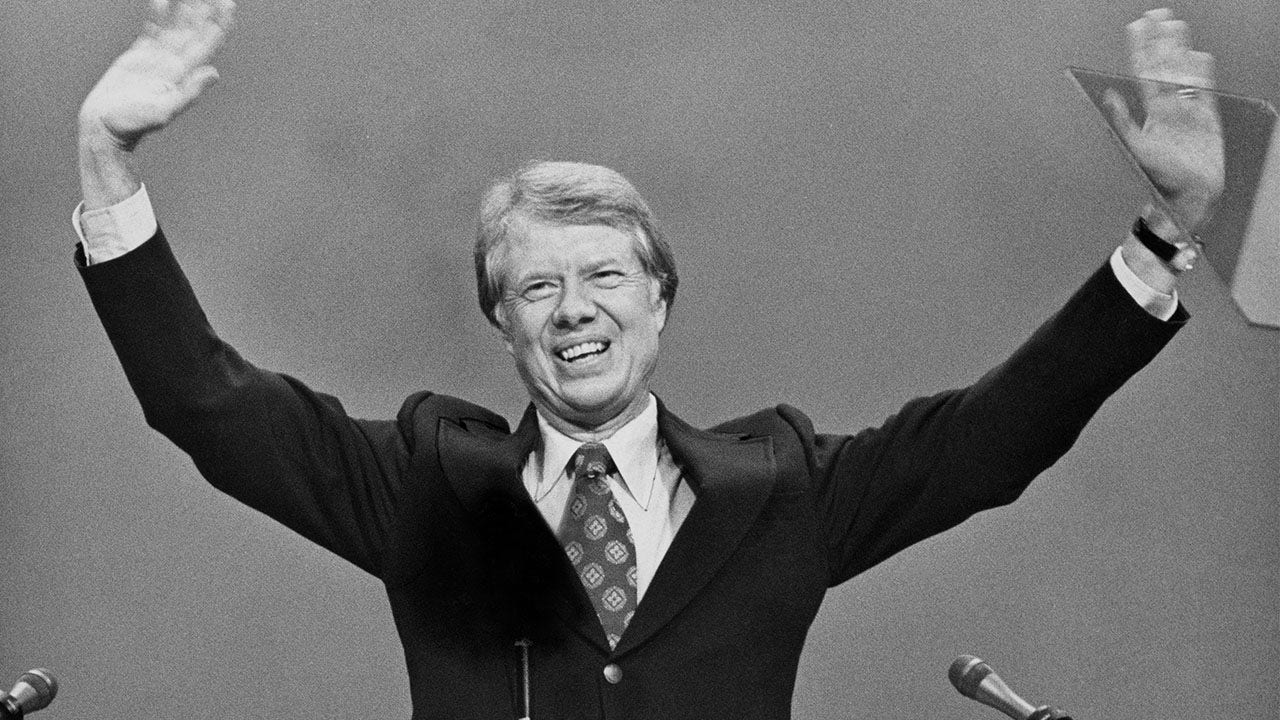New York
Governor Who Quit Politics Amid Scandal Eyes a New Job: Mayor

James E. McGreevey, a former New Jersey governor who resigned two decades ago in scandal, has built his career on reinvention. So much so that when he enters a classroom filled with newly freed felons hoping to make the most of their own second chance, they are not sure what to call him.
“Governor!” the instructor bellows.
“Jim — come on, guys — it’s just Jim!” he counters affably as he fist-bumps several men enrolled in a post-prison career training program he founded and now leads as executive director.
Mr. McGreevey, 66, has tried on other titles since he quit politics in 2004 after announcing to his second wife and to the world that he was gay and had had an affair with a man who worked for him.
He published a book, “The Confession,” and starred in a documentary produced by Alexandra Pelosi, a daughter of the former House speaker. He earned a master’s degree in divinity. He had hoped to be ordained an Episcopal priest, but amid the fallout of his bitter divorce the church turned him down.
And now Mr. McGreevey, a Democrat who once was thought to have the White House in his sights, is making plans to do what he had said he would not: re-enter politics.
Over the past several months, Mr. McGreevey has begun cobbling together support for an expected run for mayor of Jersey City, the state’s second-largest city, where he has lived for eight years.
Minutes from New York and teeming with progressive newcomers, Jersey City enjoys a prominent place in regional lore, filled with immigrants, innovation and working-class brio. But it is also 63 miles away from the State House and its attendant power and trappings.
Mr. McGreevey, who was born in Jersey City, says he has no problem with the perceived downgrade in prestige.
“Being governor is so much about the budget, the dollar,” he reasoned during an interview at the job training center in Kearny, N.J., run by his current employer, the New Jersey Reentry Corporation. “Being mayor is about building strong communities.”
He added, “It’s also a worthy place to put my energies, to hopefully do some good.”
He expects to make a final decision before Thanksgiving.
“I’m getting closer to making that decision in the affirmative,” he said.
At least three other Jersey City Democratic leaders are also seriously considering vying for the job. The current mayor, Steven Fulop, who is running for governor, does not intend to run for re-election. But the contest is not until November 2025, setting up a two-year runway in which anything might happen.
“I could be dead by then,” said Gerald McCann, 73, a former Jersey City mayor now advising Mr. McGreevey.
Still, few would dispute that Mr. McGreevey is winning the race for buzz and institutional support among key power brokers in Hudson County.
Nine of the county’s 12 mayors have publicly endorsed his candidacy. A recent fund-raiser for a nonprofit civic organization named for his parents, who, he stressed, were raised in Jersey City, drew labor leaders and local and state officials. And on Saturday he is convening the first of what he calls “listening sessions.”
On a recent morning, he wandered the halls of the training center with the confidence of a school principal and the lively gait of a St. Patrick’s Day parade grand marshal. He was eager to discuss the state-funded program in minute detail, including the 268,402 pounds of food it has provided this year to clients, the role of the on-site chaplain and the facility’s free medical and dental services.
His phone rang during the interview, and he answered it cheerfully. It was a young detainee at a state psychiatric facility who had been assigned to him as part of the client caseload he maintains, even as executive director. He listened patiently and asked if the man had read the book he shared, “Band of Brothers.”
It is his work with current and former prisoners and the insight it has offered about their lack of educational and workplace preparedness, and the realities of the impoverished communities they return home to, that most guides his current ambition, he said.
“My sense is Jersey City is at a tipping point, and it ought to be affordable for those families that have lived in the city for three or four generations,” he said.
Fans of Mr. McGreevey’s candidacy cite his decades of government experience. Before being elected governor, he was an assemblyman, state senator and mayor of Woodbridge, a sprawling suburban township in central New Jersey.
Mr. McGreevey’s 21-year-old daughter, Jacqueline, who, with her older half sister, Morag, grew up in the shadow of their father’s spectacular crash-landing from politics, said part of her wishes he would remain out of the limelight.
“I genuinely think that he would do a lot of good for a lot of people,” she said between classes at Barnard College, “so it feels kind of selfish to not want him to pursue it.”
“My dad always says, ‘Do the next right thing,’ ” she said, “whether it means study for the next test or help the next person.”
“This seems to be kind of a natural progression of where he’s been,” she added, “and what he wants to do.”
Whatever happens, Mr. McGreevey said he does not see the job as a steppingstone.
“I’m walking down the hill,” he said. “This is it.”
Jersey City’s mayoral elections are nonpartisan, a detail that diminishes the ability of county political bosses to design the ballot to all but guarantee a win for their handpicked candidates, as occurs in many other places in New Jersey.
Mr. Fulop, who did not have the backing of the county Democratic Party when he was first elected mayor, has not commented on Mr. McGreevey’s potential candidacy. The two have a fraught history: Mr. McGreevey was fired from a job in Jersey City in 2019 after Mr. Fulop and his aides suggested the former governor had misallocated funds, a claim Mr. McGreevey said was untrue and was disproved by independent audits.
The mayor of Union City, N.J., a powerful county leader, was first to champion Mr. McGreevey’s candidacy, generating a cascade of early institutional support.
But two possible Democratic opponents, William O’Dea, a county commissioner, and James Solomon, a city councilman, argued that this outside support, while helpful for fund-raising, could also backfire.
“It’s creating this overarching question: ‘Why are these folks who have nothing to do with our city imposing their will on our city?’ ” said Mr. O’Dea, who also held a political fund-raiser this week.
Mr. Solomon said voters were savvy enough to think for themselves.
“I haven’t met a voter in Jersey City who is concerned with the opinions of power brokers outside of Jersey City,” Mr. Solomon said. “They’re concerned about rents going through the roof and political cronies stealing their tax dollars. They’re going to vote for the candidate who can make their life better.”
Politics is not the only community Mr. McGreevey has returned to.
After years as an Episcopalian, he has rejoined the Roman Catholic Church, unable to walk away for good from the faith that shaped him as a child and younger man.
He attends Mass regularly at Christ the King, a predominantly African American congregation in Jersey City, parishioners say. He is friendly and contributes to the upkeep of the parish. His homosexuality, which the catechism of the Catholic church does not approve of, is not an issue, they say.
“We accept him. He accepts us,” said Ann Warren, 63, the parish business administrator.
Still, in a city where more than 75 percent of residents are nonwhite, Ms. Warren said the concerted push by county leaders to “recycle their buddies” and put him at the front of the line smacks of the “hypocrisy of the Democratic Party.”
Joyce E. Watterman, the first Black woman to serve as City Council president in Jersey City, is among the three likely mayoral candidates pushed to the side as Mr. McGreevey was elevated.
“It’s like, ‘We’re all for minorities and blah, blah, blah,” said Ms. Warren, a lifelong resident of Jersey City.
“But we’re not willing to invest the funds to put them in positions that matter. It’s just the same old boy network.”

New York
Video: Adams’s Former Chief Adviser and Her Son Charged With Corruption

new video loaded: Adams’s Former Chief Adviser and Her Son Charged With Corruption
transcript
transcript
Adams’s Former Chief Adviser and Her Son Charged With Corruption
Ingrid Lewis-Martin, who resigned as Mayor Eric Adams’s chief adviser, and her son, Glenn D. Martin II, were charged with taking $100,000 in bribes from two businessmen in a quid-pro-quo scheme.
-
We allege that Ingrid Lewis-Martin engaged in a long-running bribery, money laundering and conspiracy scheme by using her position and authority as the chief adviser of — chief adviser to the New York City mayor, the second-highest position in city government — to illegally influence city decisions in exchange for in excess of $100,000 in cash and other benefits for herself and her son, Glenn Martin II. We allege that real estate developers and business owners Raizada “Pinky” Vaid and Mayank Dwivedi paid for access and influence to the tune more than $100,000. Lewis-Martin acted as an on-call consultant for Vaid and Dwivedi, serving at their pleasure to resolve whatever issues they had with D.O.B. on their construction projects, and she did so without regard for security considerations and with utter and complete disregard for D.O.B.’s expertise and the public servants who work there.
Recent episodes in New York
New York
Read the Criminal Complaint Against Luigi Mangione

UNITED STATES DISTRICT COURT
SOUTHERN DISTRICT OF NEW YORK
UNITED STATES OF AMERICA
V.
LUIGI NICHOLAS MANGIONE,
Defendant.
SOUTHERN DISTRICT OF NEW YORK, ss.:
Original
AUSAS: Dominic A. Gentile,
Jun Xiang, Alexandra Messiter
24 MAG 4375
SEALED COMPLAINT
Violations of
18 U.S.C. §§ 2261A, 2261(b), 924(j), and
924(c)
COUNTY OF OFFENSE:
NEW YORK
GARY W. COBB, being duly sworn, deposes and says that he is a Special Agent with the
Federal Bureau of Investigation, and charges as follows:
COUNT ONE
(Stalking – Travel in Interstate Commerce)
1. From at least in or about November 24, 2024 to in or about December 4, 2024, in
the Southern District of New York and elsewhere, LUIGI NICHOLAS MANGIONE, the
defendant, traveled in interstate commerce with the intent to kill, injure, harass, intimidate, and place
under surveillance with intent to kill, injure, harass, and intimidate another person, and in the
course of, and as a result of, such travel engaged in conduct that placed that person in reasonable
fear of the death of, and serious bodily injury to, that person, and in the course of engaging in such
conduct caused the death of that person, to wit, MANGIONE, traveled from Georgia to New York,
New York for the purpose of stalking and killing Brian Thompson, and while in New York,
MANGIONE stalked and then shot and killed Thompson in the vicinity of West 54th Street and
Sixth Avenue.
(Title 18, United States Code, Sections 2261A(1)(A) and 2261(b)(1).)
COUNT TWO
(Stalking – Use of Interstate Facilities)
2. From at least in or about November 24, 2024 to in or about December 4, 2024, in
the Southern District of New York and elsewhere, LUIGI NICHOLAS MANGIONE, the
defendant, with the intent to kill, injure, harass, intimidate, and place under surveillance with intent
to kill, injure, harass, and intimidate another person, used an electronic communication service and
electronic communication system of interstate commerce, and a facility of interstate or foreign
commerce, to engage in a course of conduct that placed that person in reasonable fear of the death
of and serious bodily injury to that person, and in the course of engaging in such conduct caused
the death of that person, to wit, MANGIONE used a cellphone, interstate wires, interstate
New York
Video: Luigi Mangione Is Charged With Murder

new video loaded: Luigi Mangione Is Charged With Murder
transcript
transcript
Luigi Mangione Is Charged With Murder
The first-degree murder charge branded him a terrorist over the killing of UnitedHealthcare’s chief executive, Brian Thompson.
-
We are here to announce that Luigi Mangione, the defendant, is charged with one count of murder in the first degree and two counts of murder in the second degree, including one count of murder in the second degree as an act of terrorism for the brazen, targeted and premeditated shooting of Brian Thompson, who, as was as you know, was the C.E.O. of UnitedHealthcare. This was a frightening, well-planned, targeted murder that was intended to cause shock and attention and intimidation. It occurred in one of the most bustling parts of our city, threatening the safety of local residents and tourists alike, commuters and businesspeople just starting out on their day.
Recent episodes in New York
-
/cdn.vox-cdn.com/uploads/chorus_asset/file/25672934/Metaphor_Key_Art_Horizontal.png)
/cdn.vox-cdn.com/uploads/chorus_asset/file/25672934/Metaphor_Key_Art_Horizontal.png) Technology1 week ago
Technology1 week agoThere’s a reason Metaphor: ReFantanzio’s battle music sounds as cool as it does
-

 News1 week ago
News1 week agoFrance’s new premier selects Eric Lombard as finance minister
-

 Business7 days ago
Business7 days agoOn a quest for global domination, Chinese EV makers are upending Thailand's auto industry
-

 Health3 days ago
Health3 days agoNew Year life lessons from country star: 'Never forget where you came from'
-
/cdn.vox-cdn.com/uploads/chorus_asset/file/24982514/Quest_3_dock.jpg)
/cdn.vox-cdn.com/uploads/chorus_asset/file/24982514/Quest_3_dock.jpg) Technology3 days ago
Technology3 days agoMeta’s ‘software update issue’ has been breaking Quest headsets for weeks
-

 World1 week ago
World1 week agoPassenger plane crashes in Kazakhstan: Emergencies ministry
-

 Politics1 week ago
Politics1 week agoIt's official: Biden signs new law, designates bald eagle as 'national bird'
-

 Politics5 days ago
Politics5 days ago'Politics is bad for business.' Why Disney's Bob Iger is trying to avoid hot buttons













